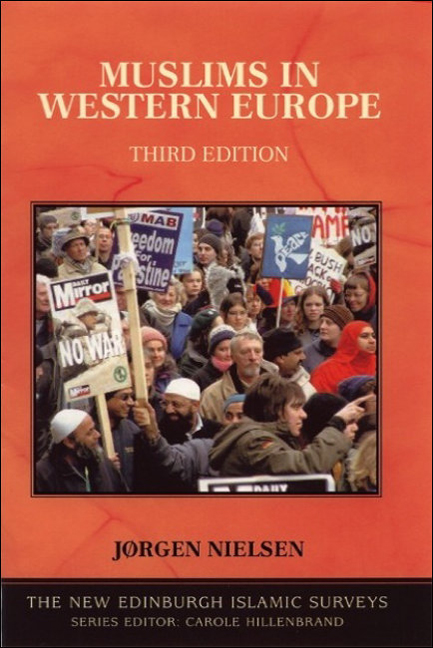1 - A brief history
Published online by Cambridge University Press: 20 December 2017
Summary
The presence of Muslims in one or another part of continental Europe probably goes as far back in time as historical Islam. Traders and diplomats have over the centuries been a continuous feature of many places in especially central and southern Europe. But it is also possible to identify three distinct periods of established Muslim communities. The first of these has passed into history, namely the period of Islamic Spain and Muslim rule in Sicily and southern Italy. The Normans put an end to the latter in the eleventh century, and the Spanish reconquista finally put an end to the last Muslim foothold in Spain in 1492. All that remains today of that phase is the rich contribution it made to all aspects of European culture.
The two following phases have, however, left permanent communities. The second was the result of the spread of Mongol armies during the thirteenth century. After only a few generations, their successor states became Muslim, and one of these, the Khanate of the Golden Horde, centred on the Volga river basin north of the Caspian and Black seas, left a permanent Muslim population of various Tatar groups stretching from the Volga down to the Caucasus and Crimea. As itinerant traders and soldiers, many of these groups later travelled around the Russian empire and established colonies in places such as Finland and the area which today straddles the border between Poland and the Ukraine.
The third phase was the period of Ottoman expansion into the Balkans and central Europe. This was the context for the settlement of Turkish populations which still survive today in parts of Bulgaria, former Yugoslavia, Romania, the republic of Macedonia and Greece. Many of the Ottoman subject populations also became Muslim, to the extent that Albania became a country with a Muslim majority, and Slav groups in Bosnia-Herzegovina and parts of Bulgaria also became Muslim.
The period with which this book deals is a relatively new, fourth phase, namely the establishment of Muslim communities in western Europe. This is generally regarded as a feature of the great period of immigration after the Second World War, but in fact the foundations were laid long before then.
- Type
- Chapter
- Information
- Muslims in Western Europe , pp. 1 - 7Publisher: Edinburgh University PressPrint publication year: 2015

